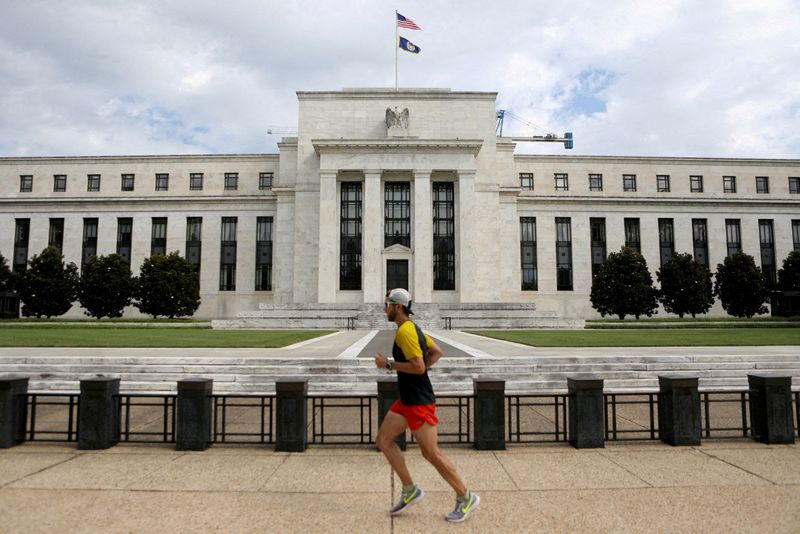Fed minutes to show depth of debate over a July rate cut
2024.08.21 06:11
By Michael S. Derby and Dan Burns
WASHINGTON (Reuters) – While the focus is now on September for the start of Federal Reserve interest rate cuts, at least some U.S. central bankers were keen to get the debate about it rolling at last month’s policy meeting.
Roughly how many were in that camp and how unified the remaining policymakers were in seeing the Fed’s Sept. 17-18 meeting as a preferred starting point for reducing borrowing costs should become clear when the minutes of the July 30-31 meeting are released on Wednesday.
The central bank’s policy-setting Federal Open Market Committee ended that meeting by leaving its benchmark overnight borrowing rate in the 5.25%-5.50% range where it has been since July 2023, but officials agreed to a number of key policy statement changes that opened the door to a rate cut at their gathering next month.
That expectation was further solidified by Fed Chair Jerome Powell’s remarks in his post-meeting press conference, when he said: “If we were to see inflation moving down … more or less in line with expectations, growth remains reasonably strong, and the labor market remains consistent with current conditions, then I think a rate cut could be on the table at the September meeting.”
Two days after the meeting, the Labor Department reported a sharp slowdown in payrolls growth in July, with the unemployment rate rising to a post-pandemic high of 4.3%.
In addition to unleashing a bout of financial market volatility that briefly reflected a small chance of the Fed rushing to cut rates prior to its next scheduled meeting, the indication of job market softening brought forth a number of Fed officials themselves to indicate they would be ready to consider rate cuts come September.
“The balance of risks has shifted, so the debate about potentially cutting rates in September is an appropriate one to have,” Minneapolis Fed President Neel Kashkari said in an interview with the Wall Street Journal that was emblematic of the shift among policymakers. Until now Kashkari had emphasized the importance of ensuring inflation returns to the Fed’s 2% target, even if that meant leaving rates where they are until near the end of this year.
CLUES
Officials last month agreed to several key changes to their policy statement, softening the description of inflation and saying the risks to employment were now on a par with those of rising prices – neutral language that sets the stage for rates to fall after more than two years of tightening credit.
But Powell, speaking in his post-meeting press conference, also said some officials “examined the possibility” of the case for cutting rates right then. Still, he said, “overwhelmingly, the sense of the Committee was not at this meeting but as soon as the next meeting, depending on how the data come in.”

Just how that discussion is reflected in the minutes on Wednesday is key and could be a guide to the scope and pace of what now appears to be an imminent shift to policy easing. Interest rate futures markets reflect a 100% probability of a rate cut next month – with the only difference of opinion around the size: A quarter of a percentage point or half a percentage point. The probability currently favors the smaller cut.
“The debate on pulling easing into July (or easing by more than 25 basis points in September) will be scrutinized closely to gauge the amount of support and, more crucially, the sensitivity of the pace, including September cut size, to the labor market moderation,” analysts at LH Meyer/Monetary Policy Analytics wrote. “Now that the debate on September is more the size of cut, less whether or not, forward guidance on easing onset might be conveyed in wording like ‘before long.'”








